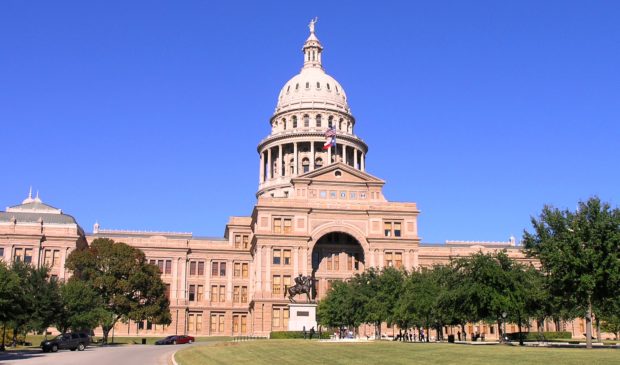With state change, Board of Adjustment could consider new hardships
Thursday, May 13, 2021 by
Elizabeth Pagano A move by the Texas Legislature could change the way the city grants variances to the Land Development Code.
The bill, House Bill 1475, would add another type of hardship for the Board of Adjustment to consider – the financial cost of complying with the code. Specifically, the bill would allow board members to consider whether:
(1) the financial cost of compliance is greater than 50 percent of the appraised value of the structure as shown on the most recent appraisal roll certified to the assessor for the municipality under Section 26.01, Tax Code;
(2) compliance would result in a loss to the lot on which the structure is located of at least 25 percent of the area on which development may physically occur;
(3) compliance would result in the structure not being in compliance with a requirement of a municipal ordinance, building code, or other requirement;
(4) compliance would result in the unreasonable encroachment on an adjacent property or easement; or
(5) the municipality considers the structure to be a nonconforming structure.
It would be a big change for the city board. Lee Simmons, the assistant city attorney who works with the Board of Adjustment, told board members that when the bill was first filed he had a neutral stance on it. “My only concern is, how does the board really quantify the financial cost of compliance?” he said. He said he hoped that point will become more clear as the bill advances through the Legislature.
“Applicants have been pushing for this kind of thing for a long time, because it’s expensive. It’s expensive to do the things that they want to do to their homes,” Simmons said. “I think the way that this is drafted, it doesn’t necessarily meet that hope or that goal that applicants have been lobbying for, but it is the first step that I’ve seen of a financial compliance hardship.”
In order to grant a variance, the Board of Adjustment must find that there is a hardship imposed on an applicant due to some facet of their property. Currently, hardships do not include financial pressures.
“I always understood that economics could not be brought into the determination of a variance. That is like the hard and fast golden rule of variances. People can’t say they don’t have the money, or they can’t say it’s a hardship financially,” Board Member Brooke Bailey said. “But now they are going to bring economics into it. Does this mean that economics in other areas can be considered?”
Simmons said, in his opinion, the bill was “fairly tailored” to the appraised value and contained specific guidelines that would prevent the board from considering economics in other cases.
Board Member Michael Von Ohlen, who also works as a contractor, expressed concern about the flexible nature of appraisals and estimates. “It’s going to be somewhat subjective,” he said. “Estimates vary widely.”
Simmons said that, as he understood the proposed legislation, the onus was on the person seeking a variance to show the economic impact, calling it a “high bar” for applicants.
“It’s a little bit nebulous. I think it would be a great challenge to show a depreciation in value and a shortening of developable area on which they could actually construct,” he said.
During the discussion, Board Member Nicholl Wade noted that the bill was written in a way that would allow the board to consider financial hardships, but not preempt their discretion or obligate the board to accept the hardship. Still, there were some reservations on the virtual dais.
Of particular concern to Board Member Rahm McDaniel was the second point in the legislation. This would allow applicants to apply for variances in cases where adherence to the city code “would result in a loss to the lot on which the structure is located of at least 25 percent of the area on which development may physically occur.”
McDaniel noted that this could apply to unusually configured lots that are unable to be developed because of slopes, heritage trees or zoning districts that are designed to serve as environmental protections. It could present an issue in preserving these protections.
Chair Don Leighton-Burwell encouraged board members to weigh in at the Legislature, if they had specific concerns.
“It isn’t law yet,” he noted. “We could probably mince words all night long about what the implications are, but it’s got to go through the Senate, it’s got to go through the governor’s desk.”
The Texas House approved HB 1475 on Saturday, May 8, and it has been referred to the Committee on Local Government.
Photo by Daniel Mayer, CC BY-SA 3.0, via Wikimedia Commons.
The Austin Monitor’s work is made possible by donations from the community. Though our reporting covers donors from time to time, we are careful to keep business and editorial efforts separate while maintaining transparency. A complete list of donors is available here, and our code of ethics is explained here.
You're a community leader
And we’re honored you look to us for serious, in-depth news. You know a strong community needs local and dedicated watchdog reporting. We’re here for you and that won’t change. Now will you take the powerful next step and support our nonprofit news organization?



